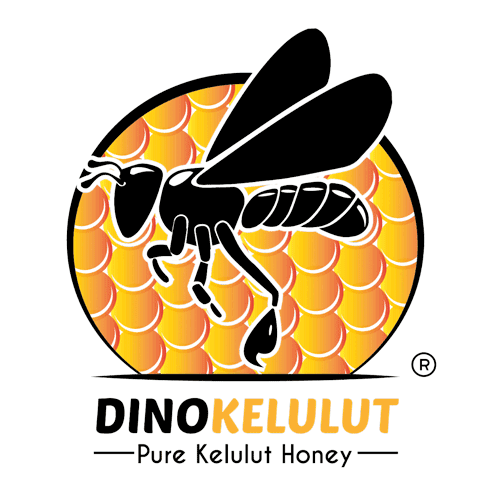properties of madu kelulut
So what exactly is Physicochemical properties of madu kelulut stingless bee trigona honey you may ask? Do read on to find out for yourself.
Suri Roowi, Arif Zaidi Jusoh and Norra Ismail
Food Science and Technology Research Centre
MARDI, Serdang
Introduction properties of madu kelulut
Kelulut (Stingless bee) honey is a natural sweet substance with certain acidity produced by stingless bees of genera Meliponini. Kelulut honey is a combination of nectar of plants or secretions of plants living, which the stingless bees collect and transform by combining with the specific substances of their own.
The honey is dehydrated, deposited and left in the natural honey pots to ripen and mature. The taste and colour of properties of madu kelulut honey vary depending on the foraging flowers and tree sap as well as time of the year. The growing interest in kelulut honey produced by kelulut is due to its antioxidant property as well as other traditional health claims.
High demand and insufficient kelulut honey production subsequently resulted in higher market value compared to the Apis bee honey. This contributed to the rapid growth of Kelulut bee farming in Malaysia. However, information on kelulut honey physicochemical properties is still lacking. The physicochemical properties of kelulut honey include sugar, ash, water content and pH.
Low production and high demand of kelulut honey led to the presence of fake kelulut honey in the market. Fake honey usually contains very high amount of HMF, sugar and artificial components. Its regular consumption may increase risk of chronic diseases such as diabetes, hypertension and cancer. In another perspective, it could also leave a damaging impact to the kelulut industry.
Relevant enforcement agencies could not take appropriate actions in the absence of kelulut honey standard which covers physicochemical parameters and proper honey processing methods. In order to put a stop to the flourishing fake honey industry, information on techniques to differentiate genuine and fake honey is also needed.
Physicochemical properties of madu kelulut stingless bee trigona honey
- Carbohydrate
The main components of carbohydrates in raw kelulut honey are fructose and glucose which jointly accounted for less than 85%. Other sugars present are maltose and sucrose at less than 9.5% and less than 7.5% respectively. - Ash
Ash content of kelulut honey is also relatively high (0.5%) than ordinary honey (0.2%). - Hydroxymethylfurfural
HMF has been found in low quantities in honey, fruit juices and milk, vinegar, jam or biscuits. In fresh honey, the HMF content is less than 15 mg / kg but, the content is much lower in kelulut honey, which is approximately 1.0 mg / kg. Other Tropical honey typically contains 80 mg/kg HMF and its contents varies between 2.8 – 24.9 mg/ kg (3-6 months) to 128.2 – 1131.8 mg/kg (12-24 months) - Water content and pH
The water content in raw kelulut honey is high (23.5% -40.5%). Raw honey need to undergo drying process to reduce moisture content. Normally the drying process temperature is less than 40 °C. For example, the water content in kelulut honey should be reduced using a dehumidifier or by storing them in refrigerator (chiller) in an open container. Kelulut honey with high water content will let bacteria and fungus to growth and causes fermentation. Fermented kelulut honey will increase acetic acid and make the honey become sourer.
Analysis and comparison studies between kelulut honey and commercial Apis bee honey
Analysis and comparison studies between kelulut honey and commercial Apis bee honey showed kelulut honey contains higher amount of free phenolic acid than commercial Apis bee honey. Analysis of phenolic acids was carried out using gas chromatograph mass spectrometer (GCMS) or high performance liquid chromatography (HPLC).
In the result shown, there were seven free phenolic acids identified in the kelulut honey (Figure 1). Phenylpropionic acid was the highest component. This was followed by 4-hydroxyphenylacetic acid and protocatechuic acid.

Figure 1: Chromatogram of phenolic acid in kelulut honey; benzoic acid (a), phenylpropionic acid (b), 4-hydroxybenzoic acid (c), 4-hydroxyphenyl acetic asid (d), vanillic acid (e), protocatechuic acid (f) and p-coumaric acid

Table 1. Phenolic acids in kelulut honey
Health benefits of phenolic acids in madu kelulut stingless bee trigona honey
The presence of various types of phenolic acids in kelulut honey shows that kelulut honey potentially has many health benefits (Table 1). According to the studies that have been conducted by MARDI, p-coumaric acid has the highest antioxidant activity in kelulut honey, followed by protocatechuic acid and vanillic acid.
All this phenolic acids plays their own role for human health. As for instance, p-coumaric acid can reduce the risk of stomach cancer by reducing the formation of nitrosamines (carcinogens).
While phenylpropionic acid – a main compound in kelulut honey can reduce the cyclooxygenase-2 enzyme 10.0 20.0 30.0 40.0 1.0 2.0 3.0 4.0 5.0 (x106 ) TIC a b c d e f g Phenolic acids Quantity (µg/g dry weight) 1 Benzoic acid 1.2 + 0.0 2 Phenylpropionic acid 273.0 + 10.0 3 4-Hydroxybenzoic acid 8.3 + 0.6 4 4-Hydroxyphenylacetic acid 16.8 + 0.5 5 Vanillic acid 11.7 + 0.3 6 Protocatechuic acid 15.6 + 0.7 7 p-coumaric acid 3.5 + 0.2 4 (COX-2).
COX-2 enzyme plays an important role in the formation of inflammation during the development of colon cancer. This compound is also effective in lowering cholesterol levels in plasma and liver as well as triglycerides in the blood. Thus, kelulut bee honey contains a variety of nutrients that may be medically beneficial to users.

Get your Madu Kelulut Stingless Bee Trigona Honey from a trusted and reputable source.
Visit my site dinokelulut.com and follow me on Facebook & Instagram @dinokelulut
